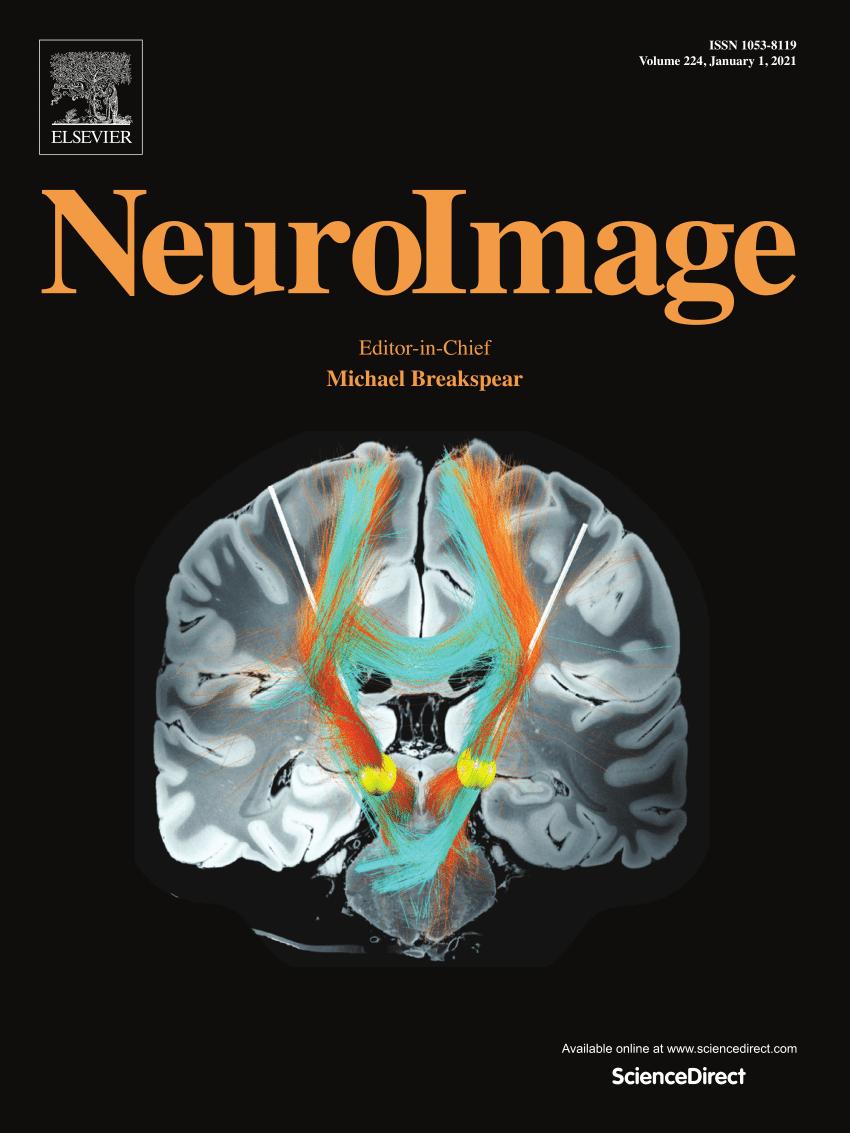利用释放本征弥散度的多回声NODDI MRI评估实验性缺血性脑卒中组织弥散和舒张特性。
IF 4.5
2区 医学
Q1 NEUROIMAGING
引用次数: 0
摘要
多回声神经突定向弥散和密度成像(MTE-NODDI)模型克服了传统NODDI模型的一个缺点,即室室信号分量对回波时间(TE)的依赖,这是由于室室横向弛豫时间(T2)的固有差异造成的。然而,该模型仍然受到具有固定的全脑固有弥散性的限制,d。本工作的主要目的是评估使用MTE-NODDI来研究大鼠模型中大脑中动脉闭塞(MCAo)后缺血性卒中组织的弥散和T2特性的优点和缺点。考虑到缺血组织中扩散特性的已知改变,第二个目标是评估一种MTE-NODDI参数的估计方法,该方法既能释放d,又能减轻随之而来的模型退化。利用MTE-NODDI参数,表征mcao后第1天至第23天缺血组织中扩散和T2特性的时空演变。所提出的方法可以访问几个独特的组织特征,否则将被传统方法所掩盖。重要的是,与固定d的模型相比,观察到d的显著降低,导致其他MTE-NODDI参数发生了显著变化。各向同性信号分数在缺血组织中显着增加,这与先前的工作相矛盾。神经突内和神经突外T2值,T2,in和T2,en在缺血组织中显著增加,而T2,in≥T2,en在两种组织中均有保持的趋势。更一般地说,一些参数,如各向同性信号分数、本征扩散率和两个区室T2值,表现出独特的、异质的时空演化,其中缺血组织的核心区和边缘区表现出不同的行为。总的来说,新估计的参数与已发表的模型报告的类似估计显示出更大的一致性,并有望显著增强对缺血性卒中后组织特性的理解。本文章由计算机程序翻译,如有差异,请以英文原文为准。

On the use of multi-echo NODDI MRI with released intrinsic diffusivity for the assessment of tissue diffusion and relaxation properties in experimental ischaemic stroke
The multi-echo neurite orientation dispersion and density imaging (MTE-NODDI) model has been proposed to overcome one of the shortcomings of conventional NODDI, namely the echo time (TE) dependence of the compartmental signal fractions, which stems from the intrinsic differences in the compartmental transverse relaxation times (T2). However, the model continues to be constrained by the limitation of having a fixed, brain-wide intrinsic diffusivity, d.
The primary aim of this work is to assess the benefits and shortcomings of using MTE-NODDI to investigate the diffusion and T2 properties of ischaemic stroke tissue following middle cerebral artery occlusion (MCAo) in rat models. Given the known alterations in the diffusion properties in ischaemic tissue, a secondary aim is to assess an estimation approach for MTE-NODDI parameters that enables d to be released while also mitigating the consequent model degeneracy. Using the MTE-NODDI parameters, the spatiotemporal evolution of diffusion and T2 properties in ischaemic tissue was characterised from day one to day 23 post-MCAo. The proposed approach enables access to several unique tissue features that would otherwise be obscured by the conventional approach. Importantly, a marked reduction in d was observed, leading to significant changes in other MTE-NODDI parameters compared to the model employing a fixed d. The isotropic signal fraction displayed a significant increase in ischemic tissue, which appears in contradiction with previous works. Regarding the intra- and extra-neurite T2 values, and , a significant increment was observed at the ischaemic tissue, while the condition displayed a tendency to hold in both tissue types. More generally, some parameters, such as the isotropic signal fraction, the intrinsic diffusivity and both compartmental T2 values, display unique, heterogeneous spatiotemporal evolution, where the core and border zones of the ischaemic tissue show different behaviours. Overall, the newly estimated parameters show greater consistency with analogous estimates reported by published models, and are anticipated to significantly enhance the understanding of tissue properties following ischaemic stroke.
求助全文
通过发布文献求助,成功后即可免费获取论文全文。
去求助
来源期刊

NeuroImage
医学-核医学
CiteScore
11.30
自引率
10.50%
发文量
809
审稿时长
63 days
期刊介绍:
NeuroImage, a Journal of Brain Function provides a vehicle for communicating important advances in acquiring, analyzing, and modelling neuroimaging data and in applying these techniques to the study of structure-function and brain-behavior relationships. Though the emphasis is on the macroscopic level of human brain organization, meso-and microscopic neuroimaging across all species will be considered if informative for understanding the aforementioned relationships.
 求助内容:
求助内容: 应助结果提醒方式:
应助结果提醒方式:


